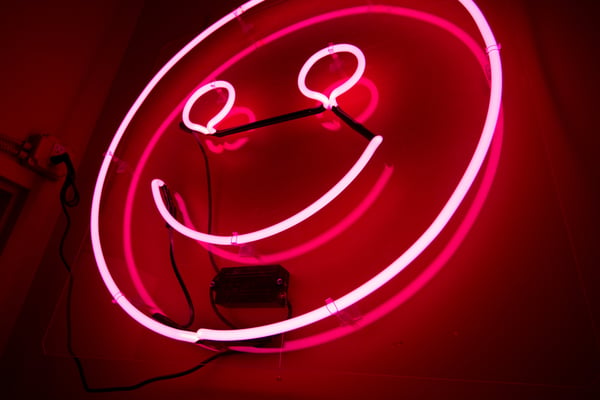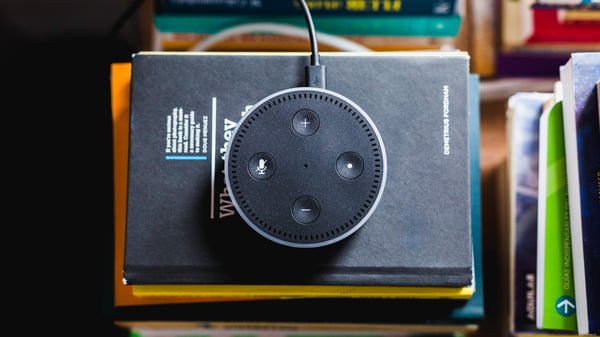What is the Power of Gamification?
by Game Marketing Genie, on 16-Jul-2020 10:34:38
Have you ever blown your yearly grocery budget in a single week trying to get a coupon that might win you a car? Have you ever driven two suburbs across to go to a specific supermarket because you were collecting their latest stamps? Or maybe, you have felt the sweet rush of dopamine that comes from being notified that your fitness app has just rewarded you with a badge? These are all examples of how gamification can have a varying degree of influence on consumer behavior.
Gamification, and the mechanics behind it, is currently big business across the military, education and training industries, and the marketing space is no different. In fact, a recent poll found that 50% of startups said they were integrating gaming elements into their strategy this year, so it’s not a topic that is reserved purely for a game development company.
What is gamification?
Despite how it sounds, gamification isn’t about creating video games, or even really about creating traditional games. In fact, the concept has been around for much longer than you’d imagine, and certainly longer than the term “gamification” has been.
In its simplest form, gamification is the overlaying of game elements such as competition, ranking and rewards onto existing consumer behaviors. Depending on its use, its purpose could be to motivate people to achieve their goals, or motivate them to complete a task they don’t really want to do. It could be used to drive people to learn quicker, upskill faster or identify new career paths more accurately. Complete a subject? Get a badge. Complete a whole course? Get a very, very fancy badge.
From a business perspective, gamification is about enhancing the interactions your customers or users have with your business, and about creating an engaging experience that runs deeper than just a simple product or service purchase.
Gamification looks to harness people’s natural and basic desires to win, stand out or master something, and to evaluate their social status. But at its core, the true goal of gamification is to build strong engagement with customers, partners or employees, encourage them to interact and share with the business regularly and - like all marketing strategies - to positively influence business results.

How does gamification work?
Tapping into some of our deepest and most fundamental physiological processes, gamification uses game mechanics to trigger powerful emotions within us that we then associate with the brand we are currently engaging in.
When trying to figure out how gamification works, you might have noticed the term game mechanics always comes up, and it’s very important to distinguish this from the term game dynamics.
The best way to describe game mechanics is to classify them as the rules and rewards that appear within the game. They are how the user engages with a gamification program, with examples being badges, points, missions and levels. To look at that description more broadly, game mechanics are basically the rules of a game.
Game dynamics on the other hand, refer to a set of behaviors, emotions and desires found in game mechanics that resonate with the user. This could be the collaboration of completing a team task, the excitement of finding a secret level / exclusive area or more commonly, the competition of seeing your name placed on a leaderboard. To scale that back even further, game dynamics are what happens within the gameplay itself. The interaction of these two elements is where the magic happens.
On the surface, gamification appears to work purely by exploiting our hard-wiring for competition and our desire to win. However, while competition is a very important driver here, it isn’t the only thing helping it be effective. Gamification also provides and helps its users with:
- Goals
- Feedback
- A sense of control
- A sense of achievement
- A reinforcement of good behavior
- Personal rewards.
But to really understand how and why gamification works, one must not ignore the psychology behind it. In the book Gamification by Design, co-author Gabe Zichermann states: “Gamification is 75% psychology and 25% technology.”
Whenever you gain a reward, or you level up, or you see yourself sitting higher on an achievement ladder than your best friend, it triggers a dopamine rush in your brain. It’s your brain’s way of saying “hey, that feels good, do that again!” It’s this same process that can lead to more serious issues like addiction. Video games can be addictive, as can card games and board games and there is a reason for that. It’s the same reason why brands that properly implement gamification keep retaining such a loyal customer base. The consumer desires that dopamine spike.

Why gamification?
So why would you use gamification in your brand strategy? What can it tangibly do for your business?
Well, the core objective of gamification is to encourage user engagement. Not just passively either, but actively where the user interacts with your brand not because they have to, but because they want to. They engage with your brand not because they are actively thinking about purchasing something, but because they are having fun doing so. Nothing on the planet cultivates engagement more than fun does.
When a user experiences feelings of happiness, excitement or satisfaction, these are obviously positive experiences, and they associate that with your brand whether they consciously decide to or not. Customers actually become loyal to the experience you provide, not just the product or service.
If your CRM strategy has a heavy focus around customer retention and retargeting, then engagement is a major factor, and gamification is a key strategy in achieving that. If you are looking to use gamification in your staff training and to engage your workforce, it’s good to know that a 2012 Gallup study found that companies with an engaged workforce outperformed their non-engaged competition by 147%. It’s been reported that content and media companies have seen online customer interactions increase by 30 – 40 percent through the use of gamification. Those are numbers you can’t ignore.

Gamification that has worked
There are thousands of examples of successfully implemented gamification strategies, many of which are coffee houses and fast food chains who reward customers with free items through their native mobile apps. But who are some of the brands that really made gamification work for them?
Nike +
The Nike+ running app is almost the gold standard when discussing successful brand gamification. Like many other fitness apps, the app tracks your running statistics and measures and rewards your progress. It taps into that competitive drive within us all, and pushes us to beat our personal best each time we run. However, the competition aspect is heightened by the ability to track your progress against your friends, family and work colleagues by sharing the information on social media.
The app has cemented Nike’s already strong relationship with its loyal customers, and encouraged many average punters to start running more. The more people run, the more shoes Nike sells.
Mr Robot
The cult hit from USA network generated obsessive fandom from computer hackers and gamers from its debut episode. But when the network introduced gamification into their marketing strategy, the engagement levels of its fans reached fever pitch. They began very early on in season one, introducing a VR film and a multi-season ARG (alternate reality game), but it was season three’s introduction of an interactive audio game that USA Network really took this to the next level.
The show itself is set within the fallout of a devastating computer hack known as the “Five/Nine hack.” During an episode, FBI agent Dom receives a briefing from her Amazon Echo by asking "Alexa, give me the Daily Five/Nine." By uttering this same phrase, audiences were able to get the same five/Nine briefing, that is then interrupted by a mysterious voice, which then sends the player off on a fully immersive audio adventure.
The Daily Five/Nine received immediate praise from the Mr Robot fans, quickly creating social buzz and a series of online communities dedicated to trading secrets and experiences about the game.

At the end of the day, you can approach gamification in a variety of ways. However you do it, we recommend it as an ideal - if not essential - marketing strategy for most brands going forwards.
Gamification can be quite a rewarding marketing strategy for your business, but there is no point in pretending that it’s an easy one. It’s not as simple as just picking the right gaming elements, inserting them somewhere within your business and then... Profit!
Ask any game marketing expert, and they’ll tell you the same thing; the design of the gaming elements is vital. If it’s too easy, users will lose interest. Too hard, and you’ll not only lose their attention, you’ll likely annoy them. It’s about finding that sweet spot where entry is easy and the mechanics are easy to learn, but the game elements are difficult to master. Game Marketing Genie can help you find your gamification sweet spot, that both engages your audience and strengthens their loyalty.
Need more info? Let's chat today about how we can make the most of your marketing opportunities.


